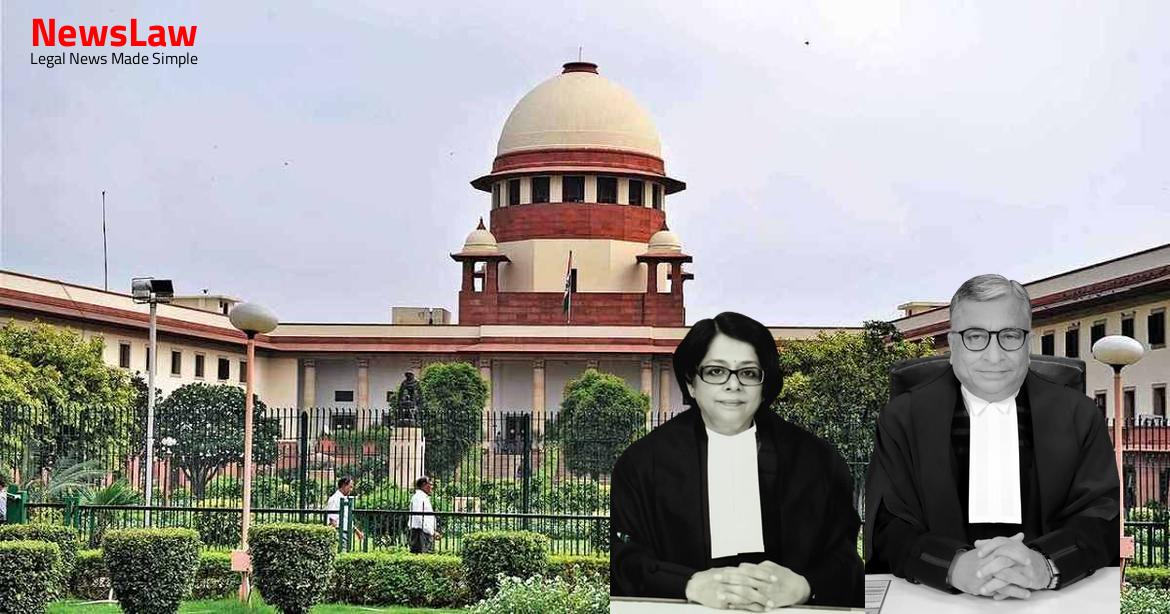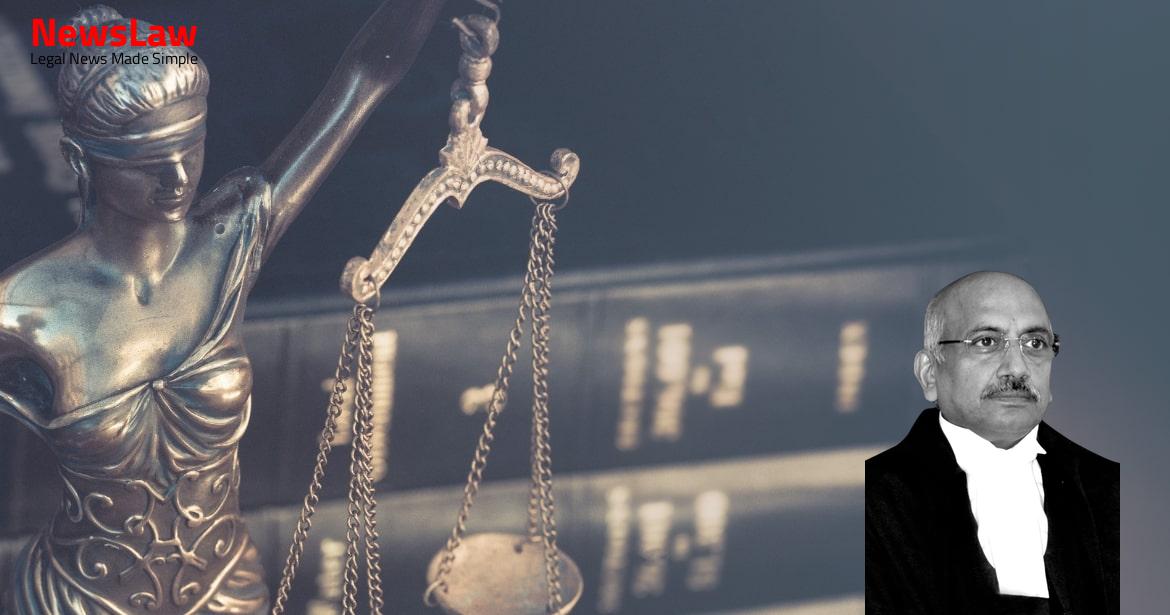In a significant legal ruling by the Supreme Court of India, the case of Accused Identification in a Criminal Trial was examined. The judgement delves into the process of identifying accused individuals during legal proceedings, shedding light on important aspects of criminal law and justice. This analysis explores the implications of the court’s decision for future legal cases.
Facts
- Accused Nos. 1 to 6 were identified as assailants by PWs 1 to 5.
- Accused No. 7 was not involved in the crime according to all eyewitnesses.
- The prosecution relied on the testimonies of PWs 1 to 5.
- Various gold articles and a wristwatch were recovered from Accused Nos. 5 and 6.
- The incident involved a violent attack on the deceased and others while they were asleep.
- The stolen articles were valued at Rs. 45,000.
- The accused fled after the incident, leaving behind bleeding victims.
- The accused were charged under Sections 109, 120B, 394, 395, 396, 449 of the IPC.
- Test Identification Parade (TIP) was conducted for all arrested accused.
- Photographs of the accused were published in local newspapers for identification.
- The appellants had no connection with the crime, leading to the acquittal of Accused No.7.
- The High Court affirmed the Trial Court’s decision and dismissed the appeals of Accused Nos.1, 2, 3, 5, and 6.
- Accused Nos. 1 to 3 were convicted under Section 395 read with Section 397 IPC, while Accused Nos. 2, 4, 5, and 6 were convicted under Section 395 IPC and awarded life imprisonment among other sentences.
- Accused No.7 was acquitted of all charges.
- Two separate Criminal Appeals were preferred by the accused parties.
- The Investigating Officer stated that the accused were not shown and identified at Singarapettai Police station and he was unaware if their photos were published in newspapers before 21-06-1999.
- The Additional Sessions Judge found Accused Nos.1 to 6 guilty of offences under Sections 394, 396, and 449 IPC.
Issue
- The issue at hand is the contention that the identification parade was held in an irregular manner.
- Another aspect of concern is the allegation of undue delay in holding the identification parade.
- These issues raise questions about the reliability and fairness of the identification process.
Also Read: CRPF Act: Validity of Rule 27 for Compulsory Retirement – Case of Head Constable vs. CRPF
Arguments
- The Advocate for the State argued that the eye-witness accounts were clear, cogent, and reliable.
- The test identification parade held 47 days after the arrest was deemed acceptable by the court.
- The defense did not impute any motive for the delay in holding the test identification parade.
- The witnesses had sufficient opportunity to observe the assailants’ features due to the nature of the incident.
- The lapse of time between the incident and the witnesses’ identification may affect the reliability of their testimony.
- The Test Identification Parade (TIP) is considered a part of the investigation to lend corroboration to witness statements in court.
- There is no strict rule on the timeframe for holding a TIP; the delay may not be fatal depending on the circumstances.
- Questions regarding the delay in TIP should be raised by the accused during the trial.
- Identification parades should ideally be held promptly to avoid memory fading.
Also Read: DAMEPL vs. DMRC: Curative Petition and Arbitral Award Restoration
Analysis
- Identification parades are crucial for testing the memory of witnesses and ensuring the right person is accused.
- Not holding an identification parade is not fatal to the prosecution, especially if the witnesses had enduring impressions of the accused.
- Identification parades are not substantive evidence but only corroborative evidence in court.
- The weight of identification evidence should be left to the courts of fact to determine.
- Close scrutiny of judgments reveals that they support the prosecution’s case.
- Injured eyewitnesses had ample opportunity to observe the accused, making their identification credible.
- The purpose of a test identification parade is to corroborate the eyewitnesses’ evidence in court.
- Test identification parades are not mandatory and are governed by Section 162 of the Criminal Procedure Code.
- Delay in holding an identification parade is not fatal if circumstances are beyond control, as long as the witnesses had enduring impressions of the accused.
- Identifying a person in court for the first time is inherently weak evidence and should ideally be corroborated with earlier identification proceedings.
- The substantive evidence of a witness is their statement made in court.
- Identification parades are meant to help the investigating agency ensure the investigation is on the right track.
- The court may accept identification evidence without corroboration in certain cases where a witness’s testimony is reliable.
- Test identification parades are part of the investigation stage and not mandatory under the Code of Criminal Procedure.
- Failure to hold a test identification parade doesn’t make the evidence of identification in court inadmissible.
- The weight given to identification evidence should be determined by the courts of fact.
- In cases where the witness didn’t know the accused previously, identification soon after the arrest is vital for the investigating agency.
- The emotional state and circumstances of the witness can impact the reliability of identification evidence.
- In some cases, the court may rely solely on the identification in court without additional corroboration.
- Promptitude in conducting test identifications is crucial for their credibility.
- The eyewitness account was accepted and relied upon
- The presence and participation of Accused Nos. 1 to 6 stood proved through the eyewitness account
- No infirmity found in the evidence of identification by PWs 1 to 5
- Appellants were rightly found guilty of the offences with which they were charged
Decision
- This part of the judgement affirms the conviction and sentence of the appellants.
- The appeals brought forward by the appellants are dismissed.
- Finality is reached in the legal process with the dismissal of the appeals.
Case Title: RAJA Vs. STATE BY THE INSPECTOR OF POLICE
Case Number: Crl.A. No.-000740-000740 / 2018



